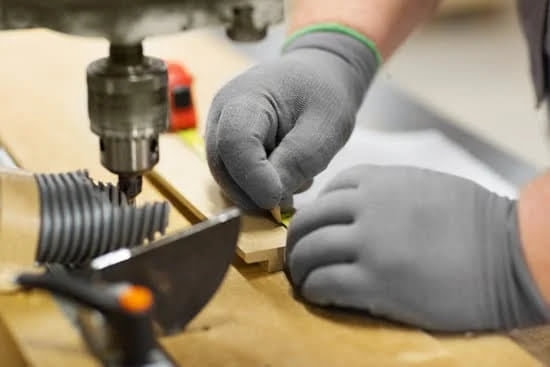Woodworking inlay materials play a crucial role in the world of woodworking, adding a touch of elegance and sophistication to any project. Whether you are a seasoned woodworker or just starting out, understanding the basics of woodworking inlay materials is essential for creating stunning and intricate designs. Inlay materials can range from wood to metal, shell, stone, and more, each offering unique characteristics that enhance the overall aesthetics of a piece.
When it comes to choosing the right woodworking inlay materials for your project, there are several factors to consider. From the desired design to durability and personal preferences, selecting the perfect materials can make all the difference in achieving your vision. Additionally, having the necessary tools and equipment is essential for working with different types of inlay materials effectively. Chisels, saws, and glue are just some of the tools required to bring your inlay designs to life.
In this comprehensive guide on woodworking inlay materials, we will explore the various types of materials commonly used, provide tips on selecting the right ones for your projects, discuss techniques for creating intricate designs, offer advice on successful project execution, and emphasize the importance of proper maintenance and care. Get ready to be inspired by stunning examples of woodworking projects showcasing the beauty and versatility of inlay materials.
Types of Woodworking Inlay Materials
Woodworking inlay materials are essential components for creating intricate and eye-catching designs in woodwork projects. There is a wide variety of materials that can be used to add beauty and complexity to woodworking pieces. One of the most commonly used materials is wood itself. Different types and species of wood can be seamlessly integrated into the main wood piece to create stunning patterns and contrast.
Metal is another popular choice for woodworking inlay materials. Metals like brass, copper, and pewter can be cut into thin strips or shapes to create elaborate designs that stand out against the wood background. The use of metal inlay can add a touch of elegance and sophistication to any woodworking project.
Shell and stone are also frequently used in woodworking inlay. Abalone shell, mother-of-pearl, turquoise, or various types of stones can be set into the surface of the wood to add color and texture. These materials bring a unique look to the overall design and offer a striking visual appeal. By carefully selecting from these different types of woodworking inlay materials, craftsmen can create one-of-a-kind pieces that showcase their skills and creativity.
| Material Type | Description |
|---|---|
| Wood | Various species can be used for patterns and contrast. |
| Metal | Brass, copper, pewter for an elegant touch. |
| Shell & Stone | Abalone shell, mother-of-pearl, turquoise or stones for color and texture. |
Choosing the Right Woodworking Inlay Materials
When it comes to woodworking inlay projects, selecting the right materials is crucial to achieving the desired outcome. The choice of woodworking inlay materials can greatly impact the overall look, durability, and feel of the finished piece. There are various factors to consider when choosing materials for your project, including the design you have in mind, the durability required for its intended use, and your personal preferences.
One of the key considerations when selecting woodworking inlay materials is the desired design of the project. Different materials offer a wide range of colors, textures, and patterns that can enhance or complement your design.
For example, if you’re aiming for a rustic look, using wood as an inlay material can add warmth and character to your piece. On the other hand, metal inlays can create a modern and sleek appearance, while shell or stone inlays can bring a touch of elegance and sophistication.
Durability is another important factor to keep in mind when choosing woodworking inlay materials. Depending on the project’s purpose – whether it’s a decorative item or a functional piece like a tabletop or flooring – you’ll need to select materials that can withstand wear and tear over time.
Considering factors such as hardness, resistance to moisture and heat, and overall strength will help ensure that your inlay work remains intact for years to come. Prioritizing durability will also contribute to the longevity of your project and reduce maintenance needs.
Ultimately, personal preferences play a significant role in selecting woodworking inlay materials. Whether you prefer natural materials like wood and stone or are drawn to more unique options like metals or shells, choosing materials that resonate with your aesthetic sensibilities will make your project truly yours. By carefully considering design elements, durability requirements, and personal taste when picking out woodworking inlay materials, you can create a masterpiece that reflects your style and craftsmanship skills.
Tools and Equipment for Working With Woodworking Inlay Materials
Woodworking inlay materials require specific tools and equipment to work with effectively. One of the essential tools needed for inlay projects is a chisel. Chisels are used to create precise cuts and carve out space for the inlay materials to fit seamlessly into the wood surface. Different types of chisels, such as bevel edge chisels and fishtail chisels, can be utilized depending on the design and depth of the inlay.
In addition to chisels, saws play a crucial role in woodworking inlay projects. A fret saw or coping saw is commonly used to cut out intricate shapes and patterns on the wood surface before inserting the inlay materials. Precision cutting is essential when working with inlays to ensure a perfect fit and seamless integration into the woodwork.
Furthermore, glue is a vital component when working with woodworking inlay materials. Choosing the right type of adhesive is crucial for securing the inlay materials firmly in place without causing damage to the wood. Epoxy resin or cyanoacrylate (CA) glue are commonly used for their strong bond and ability to withstand different environmental conditions. Proper application of glue is essential to prevent any gaps or movement between the wood and inlay materials.
| Woodworking Tool | Function |
|---|---|
| Chisel | Create precise cuts and carve out space for inlay materials |
| Saw | Cut out intricate shapes and patterns on wood surface for inlays |
| Glue | Securely bond inlay materials to wood without causing damage |
Techniques for Creating Stunning Inlay Designs
Basic Inlay Techniques
Creating stunning inlay designs requires mastering a few basic techniques. One common technique is the blind inlay, where a design is cut into the surface of a piece of wood and then filled with a contrasting material. This creates a seamless look that adds dimension to your project. Another popular technique is the double bevel inlay, which involves cutting two opposite bevels on a piece of wood to create V-shaped grooves for inserting an inlay material.
Advanced Marquetry
For those looking to take their inlay designs to the next level, marquetry is a technique worth exploring. Marquetry involves cutting intricate patterns and designs using veneers of different woods, then fitting them together like puzzle pieces to create a larger image. This method requires precision cutting and careful alignment of the veneer pieces to achieve flawless results. With practice and patience, marquetry can produce breathtaking designs that elevate your woodworking projects.
Combining Different Materials
To add visual interest and texture to your inlay designs, consider combining different materials such as wood, metal, shell, or stone. Mixing materials can create stunning contrast and unique patterns that make your projects stand out. Experiment with combining different textures and colors to find combinations that complement each other harmoniously. Remember to choose materials that are suitable for the specific woodworking techniques you’ll be using to ensure successful integration into your design.
Tips for Successful Inlay Projects
When embarking on a woodworking inlay project, it is essential to pay attention to the details and techniques involved in order to achieve flawless results. From precision cutting to expert finishing, there are several tips and tricks that can help elevate your inlay projects to the next level.
Precision Cutting
One of the key aspects of successful woodworking inlay projects is precision cutting. Whether you are cutting pieces of wood, metal, shell, or stone for your design, accuracy is crucial. Using sharp tools such as chisels and saws can help create clean and precise cuts that fit seamlessly together. Taking your time and measuring carefully before making any cuts will ensure that your inlay pieces fit perfectly into the designated areas.
Expert Finishing
In addition to precision cutting, expert finishing is another important factor in achieving flawless results in woodworking inlay projects. Once all the pieces have been accurately cut and placed, it’s essential to finish the project with finesse.
Sanding down any rough edges, applying a smooth finish or polish, and buffing the surface can enhance the overall look of your inlay design. Attention to detail during the finishing process can make a significant difference in the final outcome of your project.
Practice Makes Perfect
Lastly, one of the best tips for successful woodworking inlay projects is practice. Like any craft or skill, mastering the art of woodworking inlay takes time and patience. Don’t be discouraged by initial mistakes or imperfections – instead, use them as learning opportunities to improve your technique. With practice and dedication, you’ll be able to create stunning and flawless inlay designs that showcase your creativity and craftsmanship using a variety of woodworking inlay materials.
Maintenance and Care of Woodworking Inlay Materials
Woodworking inlay materials require proper maintenance and care to ensure longevity and preserve their beauty. By following some simple steps, you can keep your inlay projects looking stunning for years to come. Here are some tips on how to properly care for and maintain your woodworking inlay materials:
- Regular Cleaning: Dust and dirt can accumulate on your inlay materials over time, dulling their appearance. To prevent this, regularly dust your projects with a soft cloth or brush. Avoid using harsh chemicals or abrasive cleaners that could damage the delicate materials.
- Protect from Moisture: Woodworking inlay materials, particularly those made of shell or stone, are sensitive to moisture. To prevent warping or discoloration, avoid exposing your projects to excessive humidity or water. Store them in a cool, dry place away from direct sunlight.
- Avoid Sharp Impacts: Inlay materials such as shell or metal can be fragile and prone to chipping or cracking if subjected to sharp impacts. Be gentle when handling and moving your projects to avoid accidental damage. Consider adding protective pads or felt to the bottom of items like coasters or trays to prevent scratches on surfaces.
Proper storage is also crucial for maintaining the quality of your woodworking inlay projects. When not in use, store your creations in a protective case or box to prevent dust buildup and minimize exposure to light and air. Additionally, consider using a soft cloth or felt lining within the storage container to provide extra protection against scratches and abrasions.
With regular care and maintenance, your woodworking inlay materials will continue to shine and impress for years to come. By following these simple guidelines, you can enjoy the beauty of your creations while ensuring their longevity and preserving their intricate details for future generations to admire.
Remember that proper care and maintenance are essential for maximizing the lifespan of your woodworking inlay projects. By investing time and effort into preserving the quality of your creations, you can enjoy their beauty for many years to come.
Inspiring Examples of Woodworking Inlay Projects
Woodworking inlay materials offer endless possibilities for creating stunning and intricate designs that elevate any woodworking project to a work of art. By incorporating different types of materials such as wood, metal, shell, stone, and more, artisans can achieve unique and eye-catching results that showcase their craftsmanship. The beauty of woodworking inlay lies in its ability to add depth, texture, and visual interest to a piece, making it truly stand out.
One of the key factors in creating successful woodworking inlay projects is choosing the right materials that complement your design vision while also meeting the durability requirements for the intended purpose of the piece. Whether you are aiming for a rustic charm with wood inlays or a touch of elegance with metal accents, understanding how each material interacts with one another is crucial for achieving harmonious results.
By carefully selecting and combining woodworking inlay materials, you can bring your creative ideas to life and craft pieces that leave a lasting impression.
To truly master the art of woodworking inlay, practice and patience are essential. Experimenting with different techniques like marquetry or simple patterns can help enhance your skills and push your creative boundaries. Remember to pay attention to precision cutting and finishing details to achieve flawless results in your projects. With dedication and a passion for craftsmanship, you can create breathtaking woodworking pieces that highlight the beauty and versatility of woodworking inlay materials.
Frequently Asked Questions
What Are the Best Materials for Inlay?
The best materials for inlay are typically ones that offer a good combination of durability and aesthetic appeal. Some commonly used materials include wood, metal, shell, stone, and various synthetic materials like epoxy resin. Each material has its own unique characteristics that can enhance the overall look of an inlay design.
What Materials Are Used for Inlaying?
When it comes to inlaying, a wide range of materials can be used depending on the desired outcome. Traditional materials like mother-of-pearl, abalone shell, turquoise, and various types of wood are popular choices for their natural beauty and versatility. Additionally, metals like brass and silver can also be incorporated into inlay work for a touch of elegance.
What Can I Use for Wood Inlay?
Wood inlay offers a variety of creative possibilities due to its natural beauty and workability. Different types of wood with varying colors and grain patterns can be used to create intricate designs or simple geometric patterns in woodwork. Exotic woods like ebony, rosewood, maple burl, and padauk are commonly chosen for their striking appearance when used as inlay material.

Hi everyone! I’m a woodworker and blogger, and this is my woodworking blog. In my blog, I share tips and tricks for woodworkers of all skill levels, as well as project ideas that you can try yourself.





